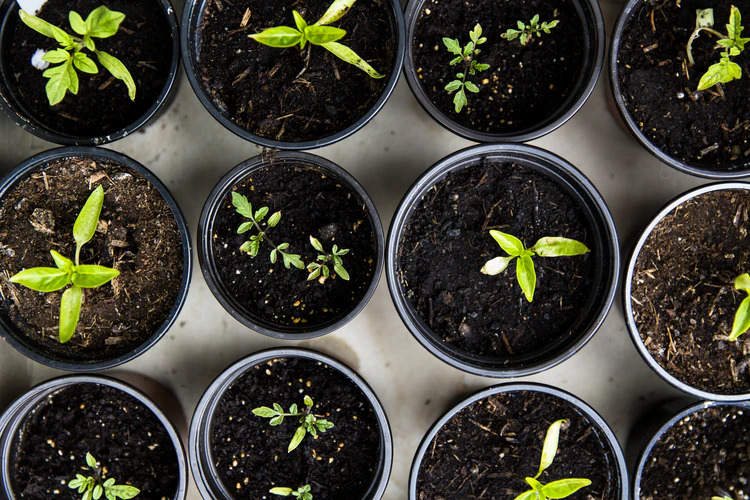There are a whole lot of reasons why you might be starting your home garden. Maybe you’re getting into a new hobby, or perhaps you’re trying to cut your expenses cheap. It might even be because you’re trying to be healthier. Whatever the reason it may be, growing your vegetables can prove to be a difficult task without the proper guidance.
Maintaining a home garden may sound like a lot of effort, but don’t let that discourage you! In fact, various vegetables thrive even under the care of beginners like you. By growing the right kind of crops, gardening will sure be a breeze. However, you can always get help with garden maintenance from Sacramento arborists.
Indeed, seeing your garden flourish can bring a sense of accomplishment—there’s just something so rewarding when producing your food. Ready to get started in your journey? Listed below are the easiest vegetables to grow for beginners.
Most of the plants in this list can be grown from seed, which is the easiest way to start, especially if you have no experience as a gardener. However, note that some plants are better grown from young plants purchased from a nursery.
You can easily find seeds for lettuce, bell peppers, and carrots in your local grocery. Growing kits for mushrooms are also readily available, making it convenient and hassle-free to begin your gardening journey. Each vegetable has different handling requirements, so know this beforehand before you start planting.
Lettuce
Love salad greens? You’re in for a treat! Lettuce grows quickly and can thrive all year long indoors or on your garden bed. It loves the sun, but it can also grow on shadier days. Moreover, it has 18 different types, so you’ll have plenty of chances to grow new varieties and serve them differently each time!
As these plants have become mainstream, you can now easily find their seed or seedlings online, in grocery stores, farmer’s markets, or from your local gardening supply shop. You can also conveniently harvest numerous times from the same plant by cutting off only the amount you need from it each time.
Tomatoes
A lot of people start their home garden by growing tomatoes. It can also be one of the most rewarding vegetables to plant out there as the taste of a homegrown tomato is superior to those bought in supermarkets.
While there are varying types of tomatoes to grow depending on the climate, roma tomatoes are a common variety for those living in warmer areas. If you want a comprehensive guide to growing this type of tomato, you can go ahead and read this article.
Carrots
Growing root vegetables such as carrots are definitely simple—just plant them into the ground early in the spring and let them grow until fall! Like most plants, carrots also come in different varieties, and it’s essential to choose the most suitable type depending on the soil you have at home, and how deep into the ground you’ll be planting them.
If you don’t have the luxury of a big space, you can also consider planting carrots into containers. However, transplanting carrots into containers does not grow as well as they do in the ground; it’s best to sow its seeds into the containers.
Bell Peppers
A relative of tomatoes, bell peppers are a warm-season crop that’s easy to grow in your home gardens. Variations of this plant can come in spicy, hot, or sweet flavors, so there’s a bell pepper for everyone! It can also be served raw or cooked in different cuisines, so home gardeners like you can enjoy multiple uses of this crop.
However, while bell peppers are resistant to most pests, maintaining the temperature is critical during the early stages of their growth. They should be planted as seeds indoors, and should you wish to transfer them outside into the soil, ensure that the area is frost-free.
Peas
Considered one of the oldest cultivated plants worldwide, green pea plants continue to be a favorite in today’s times. Growing peas is a good idea If you’re looking for a plant that’s easy to grow and only requires minimum care and attention.
Since peas are cool-weather plants, they are one of the first plants you grow at the start of the year. Moreover, you do not need to grow them indoors; you can start sowing them to the ground as soon as it has thawed.
Chilli Cayenne
If you love having spice in your food, then growing chilies might be up your alley! They thrive in sunny areas, and caring for them is similar to planting bush tomatoes. Growing them in a container and placing them on your patio is an excellent way of ensuring they receive the right amount of sun.
If you want a hotter chili, growing them in hotter conditions will produce more bite. Cayenne peppers are a great variety of chilies, and you can hang them dry for later use. However, the rest of the plant is poisonous, so it’s best to keep it from your pets’ and children’s reach.
Kale
Dubbed as a superfood, kale offers high levels of vitamin A, C, and K in one serving. If you’re trying to manage your blood pressure levels and protect yourself from cancer and diabetes, then growing kale in your garden can be a cost-effective way to do it!
Planting it in cool weather makes kale taste better, so many people start growing it during autumn and letting it mature in the cold air. Kale is versatile, so it can survive in containers, raised beds, or traditional garden beds.
Takeaway
Growing your vegetable garden is a rewarding task. It may seem confusing at first, but producing your food is easy! Selecting the most suitable vegetables to plant in your home plays a significant role in the success of your garden, so do your research when starting on your journey.

